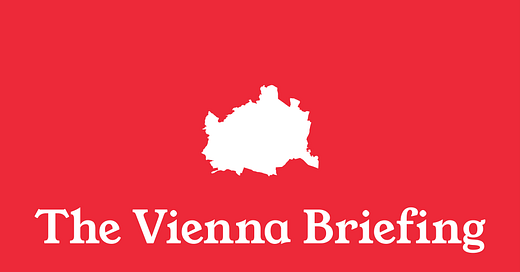More Questions, Answered
In this week's edition, I answer your questions about the Austria's economy, quality of life, and international relations
Servus!
This week, you’re reading the second part of my ask-me-anything in which I attempt to answer your questions about the current political situation in Austria, where a new government—a coalition of conservative People’s Party (ÖVP), center-left Social Democratic Party (SPÖ), and liberal NEOS—was sworn in last week. Having focused on those negotiations in the previous edition, this week your questions move onto the economy and international relations. Let’s begin with:
What is the main cause of Austria’s economic malaise, and is something as obvious as cheap natural gas the answer to all Austria's economic issues?
You’re certainly right that Russia’s invasion of Ukraine triggered an energy crisis in Europe that had a negative impact on the Austrian economy. High energy prices remain one factor holding back Austrian industry, but I’m not sure that a flood of cheap natural gas would be the answer to all Austria’s economic issues. The Austrian economy is being weighed down by a confluence of factors: the lackluster German economy, for Germany is Austria’s largest trading partner; a lack of consumer confidence, which is a legacy of the inflationary crisis; and the high cost of labor, to name three. Looking forward, the need to raise taxes and reduce spending to begin to bring Austria’s budget deficit back down below 3 percent of GDP is likely to compound Austria’s current economic problems. The Trump administration’s tariffs on European goods and push to end the Russo-Ukraine War, meanwhile, may reduce transatlantic trade while fostering further European integration, pushing Europe to invest more in its industrial base and defense and energy infrastructures.
How would you describe the economic differences between Austria and the United States for someone who’s never lived there?
The data shows that the main differences between Austria and the U.S. are that Americans are richer and more market-oriented than Austrians, but also unhappier and more indebted. In 2023, GDP per capita in the U.S. stood at $82,769.40, while in Austria that figure stood at $56,033.60. The tax burden on income is also higher in Austria, and this means that, while Austria and the U.S. are both considered high income countries, in practice, an American considering moving not only to Austria but Europe in general—save Norway and Switzerland, perhaps—should keep in mind that lower incomes and reducing purchasing power as well as narrower job opportunities and less consumer choice are the tradeoff for what one could argue are a certain level of economic and social security and a better quality of life.
Thank you for reading The Vienna Briefing. Nothing beats a personal recommendation; if you know someone who would be interested in reading this newsletter, consider sharing it with them today.
The Vienna Briefing is a reader-supported publication. Your one-time or monthly tips make my work on this newsletter possible and help keep The Vienna Briefing free for everyone.
Do the challenges to Austria’s economy threaten the country’s quality of life?
Certainly, the new government has to get the economy growing again to generate the revenue needed to sustain the welfare state that underpins Austria’s high quality of life. But the coalition will also need to reform that system to make it more sustainable in and of itself, which their program for government recognizes. They’ve committed to securing the pension system’s long-term prospects by gradually raising the de facto retirement age if necessary based on certain parameters, for example. The coalition also proposes a new, national system of entitlements as opposed to the existing state-based system. Over the next five years, the new government will need to bring down wait times in the public healthcare system and hire more hospital staff as well as doctors and specialists who’ll accept public insurance, especially in rural areas.
How does the FPÖ work with other far-right parties in Europe?
The FPÖ is part of a common front with other far-right populist parties in Europe through Patriots.eu, the pan-European political party of which they are a member alongside Viktor Orbán’s Fidesz and Marine Le Pen’s National Rally. They are a significant force in the European Parliament as part of the Patriots for Europe grouping; Patriots for Europe recently held a major summit in Madrid. The FPÖ also has bilateral ties with Orbán and Fidesz—representatives of the FPÖ met with Orbán in Vienna in November and co-signed their ‘Vienna Declaration’ outlining their shared principles—as well as Germany’s Alternative for Germany (AfD).
Could Austria give up its neutral status to join a European army now the U.S. is withdrawing from its role as Europe’s protector?
The short answer to that question is no because I don’t see a majority in parliament or in the society to undo Austria’s constitutionally anchored permanent neutrality. The longer answer is that, as you say, because of a major foreign policy shift in the U.S., Europe faces a new and uncertain security environment in which, above all, it must act as if it must provide for itself, and under these circumstances, I think we could see deeper Austrian integration into other forms of security or defense cooperation that don’t violate that neutrality, for example the European Sky Shield Initiative, a common European air defense project. The new Austrian government has also committed to raising military spending to 2 percent of GDP by 2032.
Bis bald!



